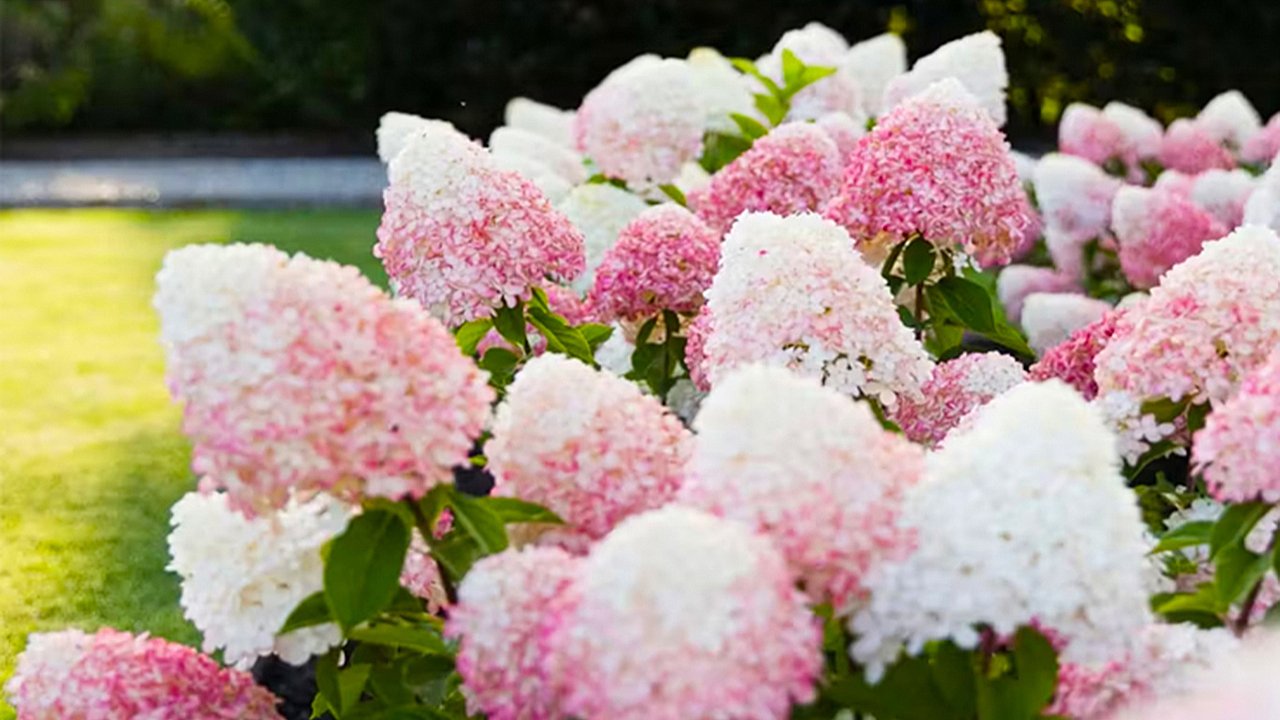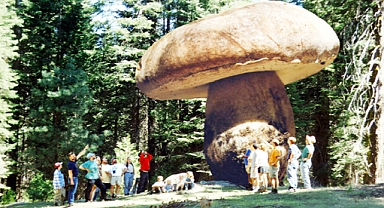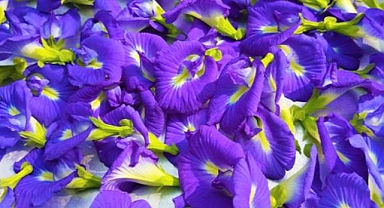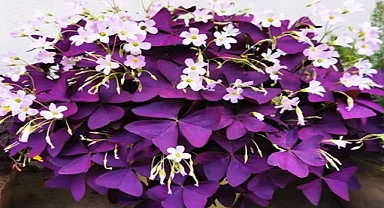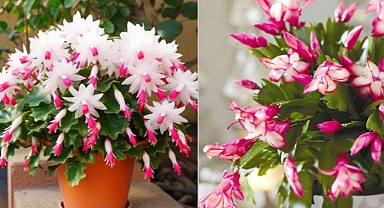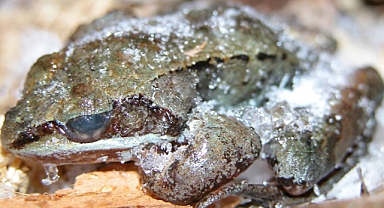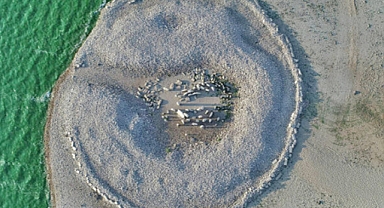It grows as an upright shrub, eventually reaching a height of 2 to 4 meters and a width of 2 to 3 meters, depending on the cultivar. Its twigs are grey-brown, and its leaves are oval to ovate, with a bright green hue that can turn greenish-yellow in autumn. These leaves have finely toothed edges, growing up to 15 centimeters long and 6 centimeters wide. The flowering period of panicled Hydrangea runs from July to October, making it one of the last hydrangeas to bloom each season. Its cone-shaped flower clusters, called panicles, consist of a mixture of sterile flowers with decorative, rounded sepals and smaller fertile flowers. While most varieties of Hydrangea paniculata do not produce the blue flowers typical of bigleaf hydrangeas (Hydrangea macrophylla), their blooms come in shades of white, cream, pink, and sometimes light green. As the season progresses, the white blooms often transition to pink. Although most Panicle hydrangeas have a majority of sterile flowers, which offer little for bees, some cultivars, such as ‘Tardiva’ and ‘Kyushu,’ have more nectar-rich, fertile blooms that attract pollinators.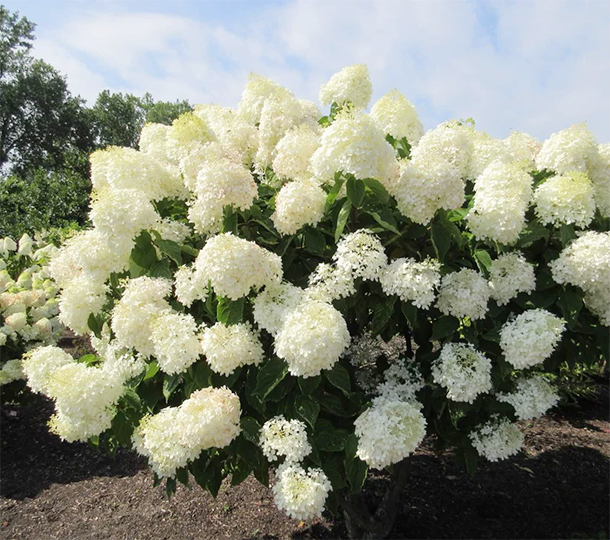 Varieties of Hydrangea Paniculata
Varieties of Hydrangea Paniculata
Winter-Hardy Varieties
Hydrangea paniculata ‘Limelight’: Known for its large flower panicles, which can Grow up to 30 centimeters long, ‘Limelight’ begins with lime-green blooms that transition to white and pale pink. It is highly frost-hardy and blooms from July to October, growing up to 2 meters tall.Hydrangea paniculata ‘Vanille Fraise’: This cultivar starts its flowering period with creamy white blooms that gradually darken into bright purple as the season progresses. It grows up to 2 meters in height, flowers from July to November, and is noted for its resilience, even in dry conditions.Hydrangea paniculata ‘Phantom’: A rarer cultivar, ‘Phantom’ produces enormous flower clusters over 30 centimeters in size. These blooms transition from white to pink and red, flowering between August and October. This variety is known for being particularly frost-hardy and grows up to 2.5 meters tall.Hydrangea paniculata ‘Diamant Rouge’: With panicles that can reach 35 to 40 centimeters in length, ‘Diamant Rouge’ begins with pure white blooms that shift to pink and finally to a deep raspberry red. The plant’s foliage turns a bright orange in autumn. It blooms from July to September and grows up to 2 meters in height.Hydrangea paniculata ‘Tardiva’: A late-flowering variety, ‘Tardiva’ produces loose, fragrant panicles of white-pink flowers that last into October. This makes it one of the few hydrangeas to offer food for insects late in the season. It grows between 2.5 to 3.5 meters in height and is very hardy.Hydrangea paniculata ‘Kyushu’: Known for its creamy white flower panicles, ‘Kyushu’ is also highly attractive to butterflies due to its fragrant, fertile blooms. It flowers from July to September, grows up to 2 meters tall, and is particularly frost-hardy.
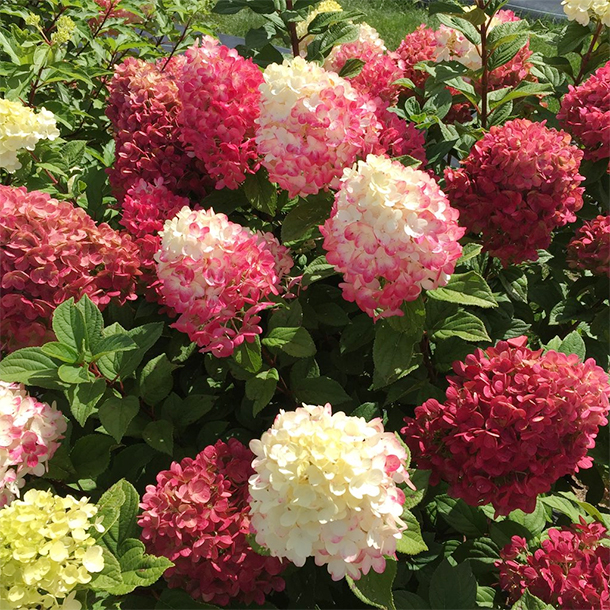 Tree-Like Varieties
Tree-Like Varieties
Some cultivars of Hydrangea paniculata, such as ‘Limelight’, ‘Levana’, and ‘Wim’s Red’, are well-suited for growing in tree form. These varieties are hardy and produce large, showy blooms.‘Levana’ produces flower clusters up to 50 centimeters long and can grow between 3 to 5 meters tall. It blooms from June to October, offering an extended flowering period.‘Wim’s Red’ begins blooming in June with white flowers that slowly transition from pink to deep red. This variety reaches up to 2.5 meters in height and flowers until September, often creating a multicolored appearance in late summer.Dwarf Varieties for Pots
For gardeners with limited space or those who wish to grow hydrangeas in containers, there are smaller varieties of Hydrangea paniculata, such as:Hydrangea paniculata ‘Mojito’: With lime-green blooms, this dwarf variety grows between 90 to 100 centimeters in height.Hydrangea paniculata ‘Little Spooky’: A white-flowered variety, this dwarf hydrangea reaches only 30 to 50 centimeters in height.Hydrangea paniculata ‘Little Fraise’: This variety features flowers that transition from white-green to pink, growing between 60 to 80 centimeters tall.
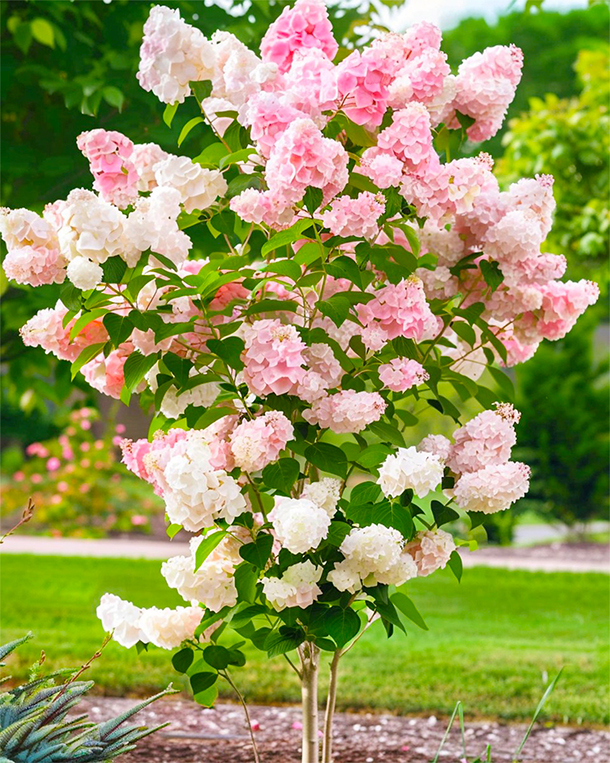 Cultivation: Location, Timing, and Planting Guide
Cultivation: Location, Timing, and Planting Guide
Panicled hydrangeas thrive in sunny to partially shaded locations that are sheltered from strong winds. They prefer well-drained, nutrient-rich soil with a slightly acidic pH of 5.5 to 6. Spring is the ideal time for planting, though they can be planted throughout the year. When planting, enrich the soil with compost or organic material to promote healthy growth. If the soil is poorly draining, mix in sand to improve its permeability. Before planting, gently break up the root ball to encourage root branching, then plant in a hole large enough for the roots to spread comfortably. After planting, water generously and consider adding mulch to retain moisture and prevent evaporation. For container planting, ensure that the pot has proper drainage to prevent waterlogging. Peat-free potting soil, such as organic flower compost, is a good option for growing in pots.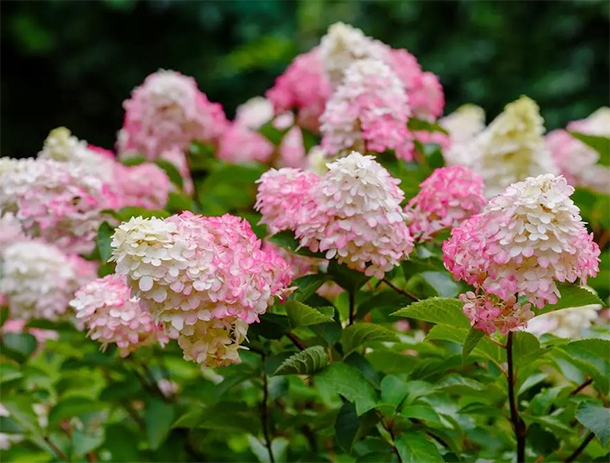 Care and Maintenance of Panicled Hydrangeas
Care and Maintenance of Panicled Hydrangeas
Panicled hydrangeas are low-maintenance compared to other hydrangea species, but proper care can enhance their growth and flowering potential.Watering and Mulching
Regular watering is essential, especially during warm months. Applying mulch around the base of the plant helps conserve soil moisture.Fertilizing
Annual spring fertilization is recommended, particularly for potted hydrangeas. A plant-based, slow-release fertilizer is ideal for promoting lush blooms and healthy growth throughout the season. Summer fertilization may also be necessary for an additional boost. Be mindful not to disturb the shallow roots of the plant during fertilization.Pruning
To maintain a compact shape and encourage abundant flowering, prune panicled hydrangeas in early spring. Removing old, deadwood will help direct the plant’s energy toward producing new growth and blooms. With the proper care, Hydrangea paniculata can thrive, offering stunning blooms throughout the late summer and into fall. Whether grown in pots or as ornamental shrubs, these hydrangeas are a beautiful, hardy addition to any garden.
 Varieties of Hydrangea Paniculata
Varieties of Hydrangea PaniculataWinter-Hardy Varieties
Hydrangea paniculata ‘Limelight’: Known for its large flower panicles, which can Grow up to 30 centimeters long, ‘Limelight’ begins with lime-green blooms that transition to white and pale pink. It is highly frost-hardy and blooms from July to October, growing up to 2 meters tall.Hydrangea paniculata ‘Vanille Fraise’: This cultivar starts its flowering period with creamy white blooms that gradually darken into bright purple as the season progresses. It grows up to 2 meters in height, flowers from July to November, and is noted for its resilience, even in dry conditions.Hydrangea paniculata ‘Phantom’: A rarer cultivar, ‘Phantom’ produces enormous flower clusters over 30 centimeters in size. These blooms transition from white to pink and red, flowering between August and October. This variety is known for being particularly frost-hardy and grows up to 2.5 meters tall.Hydrangea paniculata ‘Diamant Rouge’: With panicles that can reach 35 to 40 centimeters in length, ‘Diamant Rouge’ begins with pure white blooms that shift to pink and finally to a deep raspberry red. The plant’s foliage turns a bright orange in autumn. It blooms from July to September and grows up to 2 meters in height.Hydrangea paniculata ‘Tardiva’: A late-flowering variety, ‘Tardiva’ produces loose, fragrant panicles of white-pink flowers that last into October. This makes it one of the few hydrangeas to offer food for insects late in the season. It grows between 2.5 to 3.5 meters in height and is very hardy.Hydrangea paniculata ‘Kyushu’: Known for its creamy white flower panicles, ‘Kyushu’ is also highly attractive to butterflies due to its fragrant, fertile blooms. It flowers from July to September, grows up to 2 meters tall, and is particularly frost-hardy.
 Tree-Like Varieties
Tree-Like VarietiesSome cultivars of Hydrangea paniculata, such as ‘Limelight’, ‘Levana’, and ‘Wim’s Red’, are well-suited for growing in tree form. These varieties are hardy and produce large, showy blooms.‘Levana’ produces flower clusters up to 50 centimeters long and can grow between 3 to 5 meters tall. It blooms from June to October, offering an extended flowering period.‘Wim’s Red’ begins blooming in June with white flowers that slowly transition from pink to deep red. This variety reaches up to 2.5 meters in height and flowers until September, often creating a multicolored appearance in late summer.Dwarf Varieties for Pots
For gardeners with limited space or those who wish to grow hydrangeas in containers, there are smaller varieties of Hydrangea paniculata, such as:Hydrangea paniculata ‘Mojito’: With lime-green blooms, this dwarf variety grows between 90 to 100 centimeters in height.Hydrangea paniculata ‘Little Spooky’: A white-flowered variety, this dwarf hydrangea reaches only 30 to 50 centimeters in height.Hydrangea paniculata ‘Little Fraise’: This variety features flowers that transition from white-green to pink, growing between 60 to 80 centimeters tall.
 Cultivation: Location, Timing, and Planting Guide
Cultivation: Location, Timing, and Planting GuidePanicled hydrangeas thrive in sunny to partially shaded locations that are sheltered from strong winds. They prefer well-drained, nutrient-rich soil with a slightly acidic pH of 5.5 to 6. Spring is the ideal time for planting, though they can be planted throughout the year. When planting, enrich the soil with compost or organic material to promote healthy growth. If the soil is poorly draining, mix in sand to improve its permeability. Before planting, gently break up the root ball to encourage root branching, then plant in a hole large enough for the roots to spread comfortably. After planting, water generously and consider adding mulch to retain moisture and prevent evaporation. For container planting, ensure that the pot has proper drainage to prevent waterlogging. Peat-free potting soil, such as organic flower compost, is a good option for growing in pots.
 Care and Maintenance of Panicled Hydrangeas
Care and Maintenance of Panicled HydrangeasPanicled hydrangeas are low-maintenance compared to other hydrangea species, but proper care can enhance their growth and flowering potential.Watering and Mulching
Regular watering is essential, especially during warm months. Applying mulch around the base of the plant helps conserve soil moisture.Fertilizing
Annual spring fertilization is recommended, particularly for potted hydrangeas. A plant-based, slow-release fertilizer is ideal for promoting lush blooms and healthy growth throughout the season. Summer fertilization may also be necessary for an additional boost. Be mindful not to disturb the shallow roots of the plant during fertilization.Pruning
To maintain a compact shape and encourage abundant flowering, prune panicled hydrangeas in early spring. Removing old, deadwood will help direct the plant’s energy toward producing new growth and blooms. With the proper care, Hydrangea paniculata can thrive, offering stunning blooms throughout the late summer and into fall. Whether grown in pots or as ornamental shrubs, these hydrangeas are a beautiful, hardy addition to any garden.
